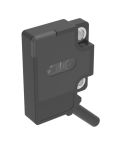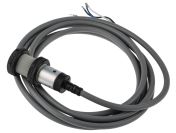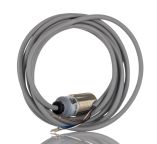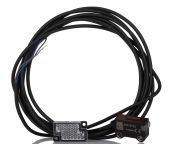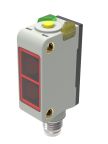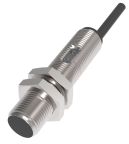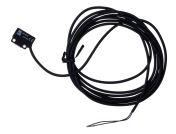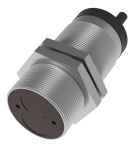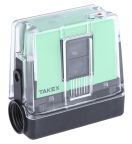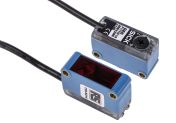Photoelectric Sensors
Photoelectric sensors (sometimes referred to as ‘photo sensors’) are versatile devices used to detect objects and distances. RS Malaysia, a leading photoelectric sensor supplier, offers a wide range of sensor types suited for diverse applications.
What are Photoelectric Sensors?
Photoelectric sensors determine the distance, absence, or presence of physical objects by emitting a field or beam of electromagnetic radiation. Generally, photoelectric sensors have an emitter for emitting light and a receiver for receiving light. When an object crosses the field or beam, the light is interrupted or reflected, altering the light that reaches the receiver. This change is detected and processed to determine the presence or position of the object.
There are 3 main types of photoelectric sensors: through-beam, retro-reflective and diffuse, which vary slightly in the way they function. However, the basic function of each is to detect the presence or absence of objects or measure the distance to the object.
With RS Malaysia, you can buy high-quality photoelectric sensors featuring top brands like Omron, Banner, Sick and more. Explore our extensive collection to find robust and reliable photoelectric sensors tailored to meet various industrial needs and specifications.
Types of Photoelectric Sensors
Through-beam Sensors
Through Beam Sensors (aka thru-beam) rely on two separate housings, one for the transmitter and one for the receiver, with the transmitter providing a continuous beam of light to the receiver. Each time an object passes through the beam, this interrupts the signal between the transmitter and receiver, which in turn causes the receiver to send an electrical signal to the output. Through-beam sensors are suited to long-distance sensing and can detect almost any object, irrespective of colour or angular motion.
Retro-reflective Sensors
Retro-reflective photoelectric sensors (retroreflective) have both the transmitter and receiver contained within the same housing but require a reflector opposite to the sensor. The reflector bounces the light beam back to the transmitter until an object breaks the beam. Objects which are highly reflective, such as aluminium, require sensors with polarising filters. The filter allows the sensor to acknowledge that the reflected light from reflecting materials is different from the reflector.
Diffuse Sensors
Diffuse photoelectric sensors (proximity sensors) are easier to install as only one device must be mounted. This is because the transmitter and receiver are contained within one housing. Diffuse sensors use the reflection from the target object within a predetermined sensing range.
The transmitter sends out a continuous beam of light. Once this hits the target, it is diffused in all directions, and a part of this light is reflected and recognised by the receiver. The receiver then sends an electrical signal to the output. A special type of diffused mode is background suppression which enables the user to precisely control the sensing range.
Photoelectric Switch Sensors
Photoelectric switch sensors use light beams to detect the presence or absence of objects, controlling machinery accordingly. They operate in through-beam, retro-reflective, or diffuse modes, making them versatile for automation. These sensors are crucial in manufacturing processes where precision object detection triggers specific actions or safety protocols.
Photo Reflective Sensors
Photo reflective sensors detect objects by emitting light and measuring the reflection off the object's surface. They combine emitter and receiver in one unit and are ideal where space is limited. These photo sensors are widely used in applications like conveyor systems and packaging lines, where they help in object positioning and counting by sensing the light reflected back from the objects.
Applications of Photoelectric Sensors
Food Industry
Photoelectric sensors are extensively used in the food industry to ensure precision and safety in food processing and packaging. For example, these sensors can detect the presence of food items on a conveyor belt to ensure proper filling and packaging, avoiding bottlenecks and ensuring continuous production flow.
Pharmaceutical Industry
In the pharmaceutical industry, photoelectric sensors play a crucial role in maintaining stringent quality control. They are used to verify the presence of pills in packaging or to ensure that vials are correctly filled. For instance, a diffuse photo sensor might detect the fill level in a transparent vial, triggering an alarm if it falls below a set threshold.
Packaging Plants
Photoelectric sensors in packaging plants optimise the automation of packaging lines. They help in detecting the position of items for accurate labelling, wrapping, and sealing. An example of their application is in carton packing, where through-beam sensors ensure that each carton is properly sealed and ready for shipping. These sensors can be integrated with other devices, such as monitoring relays and limit switches, to enhance automation, safety, and efficiency.
Automotive Industry
In the automotive industry, photoelectric sensors are critical for assembling parts with high precision. They ensure components are correctly positioned before robotic arms perform tasks like welding or screwing. For example, a retro-reflective sensor could check the presence of a car door panel before an automated tool instals it.
Doors & Gates
Photoelectric sensors are vital for the safety and operation of automated doors and gates. They are used to detect the presence of a person or vehicle, ensuring the door or gate opens or closes at the right time. For instance, through-beam photoelectric sensors across the threshold of a garage door ensure it does not close if an object is detected, preventing accidents.





